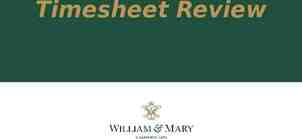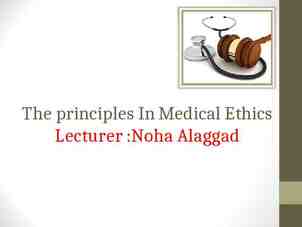The Autonomic nervous system L1 Objectives After studying this
31 Slides3.35 MB

The Autonomic nervous system L1 Objectives After studying this lecture, you should be :able to Describe the organisation of the autonomic .1 .nervous system List the differences between the efferent.2 somatic & autonomic nerves List the anatomical divisions of the ANS .3 Describe the location of the cell bodies and ,4 axonal trajectories of preganglionic and postganglionic sympathetic neurons

The autonomic nervous system The nervous system & the endocrine system control all body functions The N.S. controls the rapid functions ,while the endocrine S. control the Metabolic function. The A.N.S. controls the involuntary functions (vis. mov., sec. of the glands, heart beats, resp.) which are not under our will &so controlled Automatically & reflexly, because some of them are too vital to allow any interference from our behavior.

The A.N. S often operates by centers in the spinal cord ( such as emptying of the urinary bladder is integrated in the S.C.) . Brain stem (centers for control of B.pr. ,H.R. & respiration) Hypothalamus (temp. reg. center & centers to control hunger & thirst) & also portions of the cerebral cortex . Higher centers can transmit impulses to lower centers & influence aut. Control. For instance stimulation in a ppropriate areas of the hypoth. Can activate the medullary C.V.C. control centers strongly enough to increase the arterial B.Pr. to more than double normal. Cerebral cortex has connections with the hypoth. & brainstem.

The A.N.S.acts within a reflex arc: A receptor Afferent n. integration in the C.N.S Efferent n. effector.(mus., glands). The rec. & the aff. N. are similar to that of the somatic N. While the efferent n. (Which differs from the somatic motor system anatomically & fuctionally.) can be divided anatomically into:Sympathetic ¶sympathetic pathways(with the enteric N. S.) These two systems are antagonistic in their effects(if one excites, the other will inhibit). The efferent N. consists from preganglionic & postganglionic N.

Sympathetic division: The cell body of its preganglionic n. is located in the spinal cord (in the Intermediolateral nuc. of the lateral horn ,from T1-L2). Then the N. will pass to the paravertebral sympathetic ganglionic chain (In which there is one ganglia corresponding to each segment) Some of these N. will synapse in these ganglia postgang. N. Viscera. The other N. pass through these gang. without synapse& end on post ganglionic N. located in collateral gang. Close to the viscera.

In the gang. The preganglionic N. usually synapse with 8-9 of the bodies of postganglionic N.(to diffuse the impulse). The axon of the preganglionic N. is mylinated (B fiber). While that of postganglionic is unmylinated (Ctype). The postganglionic symp.

Parasympathetic division (Cranio-sacral outflow): A. Cranial outflow: To the viscera in the head go through oculomotor, facial &glossopharangeal n. While in the thorax &upper abdomen via the vagus N.(50-75% of the parasymp. B. Sacral outflow: Supplies the pelvic viscera via the pelvic branches of the 2nd-4th sacral N. In both outflow ,the preganglionic division will end on a short postgang. division on a ganglion near the visceral structure.

Transmission at the autonomic synapses: The transmission at the synaptic junctions between the pre &post ganglionic N. &between the postganglionic & the effecter is chemically mediated: The agents include: Acetylcholine. Nor epinephrine Dopamine L.H.R.H, VIP Others like cotransmiters. Chemical divisions of the A.N.S According to the type of neurotransmitter secreted, the A.N.S. can be divided into: A. Cholinergic division: secret Ach. B. Adrenergic division: secret nor epinephrine

The cholinergic N.: 1. All preganglionic N. (of the symp. & parasymp divisions). 2. The anatomically postganglionic parasymp. 3. The anatomically postganglionic symp. N. to the B.V. in the sk.mus.,heart, brain(causes vasodiltation),& to the sweat glands. The remaining postganglionic symp. N. are nor adrenergic neurons. Acetylcholine (Ach) : It is synthesized in the terminal nerve endings of cholinergic fibers Most of the synthesis occurs in the axoplasm outside the vesicles & then it is stored in the vesicles in the nerve endings , once it is secreted it persists in the tissue for few sec.: Cholin acetyl transferase Choline Acetyl-CoA choline There is usually no Ach. In the circulation Acetylcholin esterase Ach acetate

Adrenal medulla: It is a sympathetic ganglia in which the postganglionic cells loss their axons & become specialized to secrete directly into the blood stream (epinephrine, nor epinephrine& dopamine) circulating catecholamine. Norepinephrin(NE): Synthesis started in the axoplasm of the terminal nerve endings of noradrenergic nerve fibers but is completed in the vesicles: hydroxylation Decarboxylation Tyrosine DOPA Dopamine Transport of dopamine into vesicles. Methylation Dopamin NE In adrena medulla , this reaction goes still one step further to transform 80% of the NE methlation into epinephrine: NE Epinephrine. After secretion of NE , it is removed by:

1. Reuptake into the nerve endings (50-80%) 2. Diffusion into the surrounding body fluids & then to the blood. 3. Destruction by enzymes (monoamine oxidase), &(catechol-Omethltransferase. NE secreted by the nerve endings remains active for afew sec. NE &E secreted by the adrenal medulla remain active until they diffuse into some tissues where they are destroyed by COMT., So NE &E remain active for 10-30 sec.

Types of receptors: 1.Cholinergic receptors: which are stimulated by Ach.: A. Nicotinic R. :present in the aut. gang.& at the neuromuscular junction with sk.mus. B. Muscarinic R. :present in the organs on which cholinergic N. will act. 2.Adrenergic R.: a. alpha R.: alpha 1&alpha 2are linked to different G proteins(Binding of an agonist to α 1 adrenoceptors leads an increase in intracellular Ca 2 . Binding of an agonist to α 2 -adrenoceptors causes dissociation of the inhibitory G protien to inhibit adenylyl cyclase and decrease (cAMP). b. Beta R.: beta 1 &beta 2,beta3(activate adenylyl cyclase and increase cAMP

Nor epin. Acts on alpha more than on beta R. Epineph. Acts on alpha &beta R. equally. Responses of the effecter organs to the A.N.S.: All the viscera (glands, smooth mus. &sphincters) are supplied by Chol. & noradr. N. in which they are in antagonism, except to the sphincters both of them are excitatory (e.g.:sph. Of the eye) WHY? Because one supply the constrictor & the other supply the dilator.

L3 Objectives: After studying this lecture, you should be able to: 1. Describe functions of the sympathetic and parasympathetic nervous systems 2. List the causes of the localized discrete effect of the anabolic nervous system 3. List the causes of the widespread diffuse & prolonged effects the catabolic nervous system

Cholinergic discharge: The function promoted by activity in the cholinergic division are those concerned with the vegetative aspect of day to day living ( it favors digestion & absorption of food by increasing mus. activity, gastric secretion, &relaxation of pyloric sphincter. So the chol. Pathway called the anabolic nervous system. P.N.S. is mainly activated in response to reflex activity & has localized discret effects because: 1. parasymp. prgang. Axons go directly to parasymp. Gang. 2.Ach. Is rapidly destroyed by Achesterase enzyme. 3.Mainly the P.S.N.is activated in response to reflexes according to the need of a particular organ.

Noradrenergic discharge:( Catabolic N. S.) In emergency or stressfull situation or emotional states( fear or fright, sever pain ,exercise,bleeding ect.) . The hypothalamus is stimlated by signals passing via afferents from sense organs & cerebral cortex, then the signals transmitted downward through the R.F. into the S.C. to cause massive symp. Discharge to prepair the individual to cope with the emergency like: Constriction of the B.V. of the skin. Pupillary diltation. Increased H.R.& B.pr. Increase rate & depth of resp. Increased blood glucose & free fatty acids. Increased mental activity & muscle strength. These changes increase the physical fitness to prepare the individual for fight, or flight. At other time symp. Activation occurs in isolated portions of the system& in response to reflexes & the effects are localized like in heat regulation ( SNS controles sweating & blood flow in the skin without affecting other organs innervated by SNS).

SNS usually has widespread diffuse & prolonged effects : 1.A single preganglionic fiber usually contributes synaptic reactions by way of collateral axon branches to several symp. Gang.& at every gang. ,pregang. Axons usually synaps with several postgang. N. ,the postgang. Fibers are long & has many branches projecting to several visceral organs. 2.Neuronal reuptake of N.E. is incomplet. 3.Activation of the adrenal medulla.




















